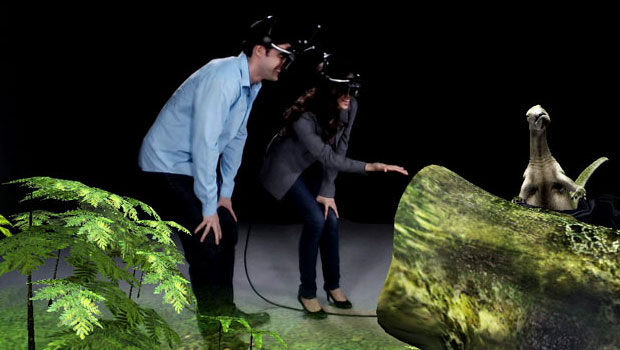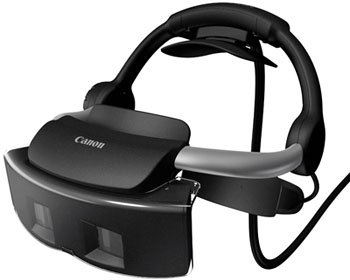
Canon officially launched its new MREAL System for Mixed Reality on Wednesday. Unlike traditional virtual reality-type systems that essentially block out the real world, this new imaging solution simultaneously merges virtual objects with those of the real world at full scale and in three dimensions.

MREAL could have the potential to make the current generation of 3D displays seem rather flat by comparison, but at an announced price of US$125,000, the system isn’t exactly something for the consumer market — at least, not anytime soon.
“Definitely not tomorrow,” said Dennis Amorosano, director and general manager, at Canon’s software product marketing and solutions business development division. “This technology certainly has the potential for consumer applications provided we can take the core informational technology and make it more lightweight, and get it to a price point that would make sense from a consumer standpoint.”
What it could do is allow developers and designers to have full-scale versions of products that could be viewed from all sides.
“Our primary target is really looking at product life cycle management — ongoing product design and development — and that is where we are focusing our energy as we bring this product to market,” Amorosano told TechNewsWorld.
Merging the Virtual and Real
Canon’s MR Platform is the result of software integration with leading design applications that include Siemens PLM Software’s NX, a solution for computer-aided design, manufacturing and engineering, and the 3D visualization software RTT DeltaGen, which is what is able to render the mixed reality images through the Canon head-mounted display.
It is this technology that provides the lifelike realism — and it accomplishes it without requiring the user to experience it in a closed environment such as Star Trek’s holodeck. With the head-mounted system, the mixed reality can go just about anywhere.
“This technology is an enhancement of technology that includes an immersive power wall or power cave,” said Ryan Schnackenberg, head of software at RTT USA.
“The power wall is usually a rear-projection scenario, while a cave has projection around you,” he explained. “This technology no longer has to leverage those brick-and-mortar technologies.”

There are other advantages to being able to break the four walls, including the fact that those systems are complex from an infrastructure standpoint, added Schnakenberg.
“Those need to be tweaked customizations — revitalized, rebooted. This technology doesn’t have those requirements,” he said.
“This technology can almost fit in a box, and you can take it with you and either into a design studio, where it can be used to design products and manufacture products — or you can take it on the road to a full consumer clinic-type scenario,” Schnakenberg told TechNewsWorld. “This allows consumers to interact with a product they might not have had the opportunity to interact with otherwise.”
This raises the question whether it could eventually — if not tomorrow, as Canon’s Amorosano noted — trickle down to consumers. It is all a matter of seeing the costs come down.
“You’re not going to sell this at the price point it is at now to consumers; you have to get down to that $1,000 kind of price tag,” Amorosano noted, but “the technology itself has the potential for us to get into a more consumer-type of product [rather] than being just something that is B2B.”
Seeing Is Believing
Before it can trickle down or find other uses, the goal is to get people to experience it, which is already happening.
The way this technology is able to merge the real with the virtual may need to be seen to be fully appreciated, and those attending Wednesday’s presentation got that opportunity by “sitting” in a car that actually existed only within the computer.
“It was remarkable,” said Holly Muscolino, research director at IDC, after taking part in the presentation.
“It was remarkably real. I wanted to reach out and touch the car. It looks very tactile, like you can physically touch it,” she added.
“This could be fit into the educational experience where you can interact with what you are learning about,” Muscolino suggested.
The fact that it is so immersing opens the door to other possibilities, including making museum attractions more interactive. Canon’s executives presented several options, but given the ongoing budget battles, is this a technology that a cash-strapped museum can afford? On the other hand, might it be something a museum can’t afford not to have?
“It all depends on the use case. As a museum, you need to look at what it costs to change an exhibit. What is the cost to move content around?” said Amorosano.
“For example, some museums may not have the room for a [certain] type of an exhibit, and this gives them an alternative way of looking at that,” he pointed out. “This could be considered against the traditional costs of exhibits, so museums may find that the economics make sense.”





















































